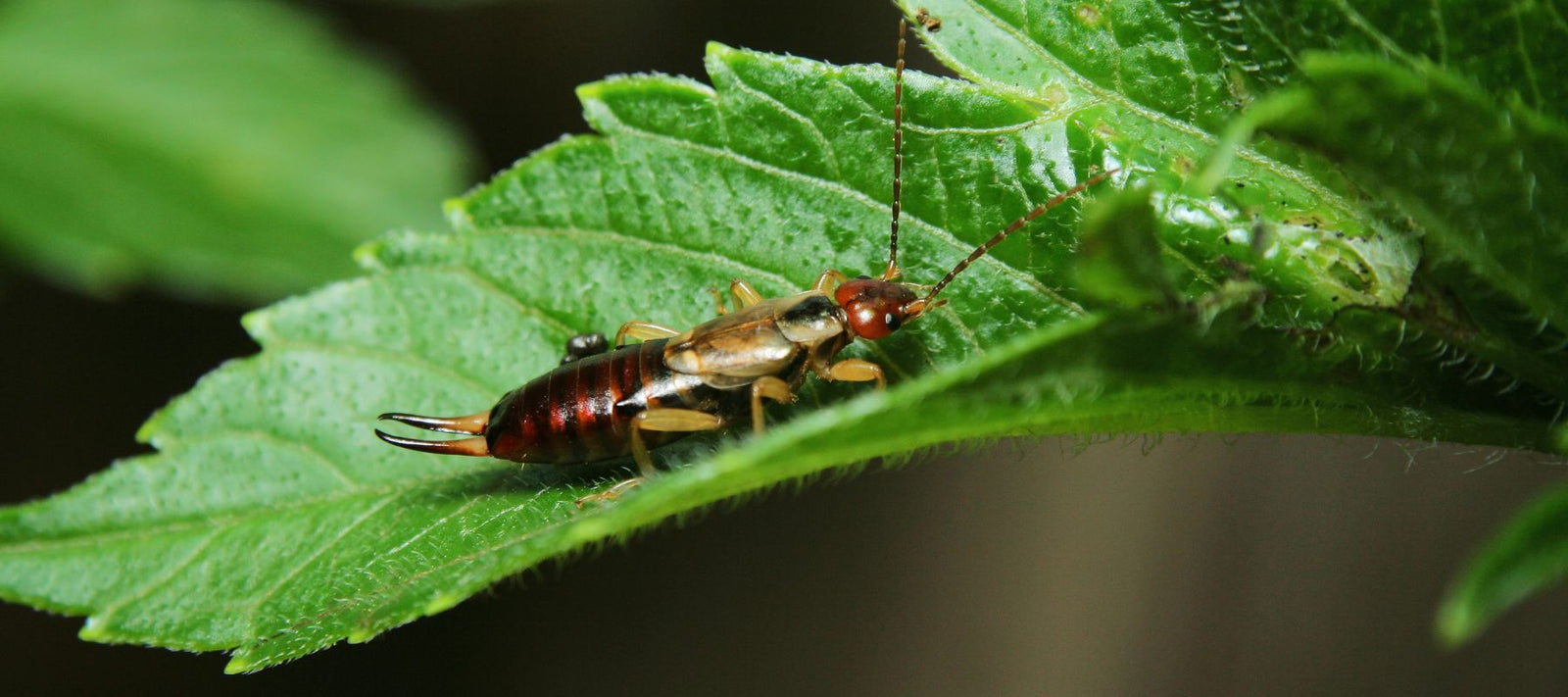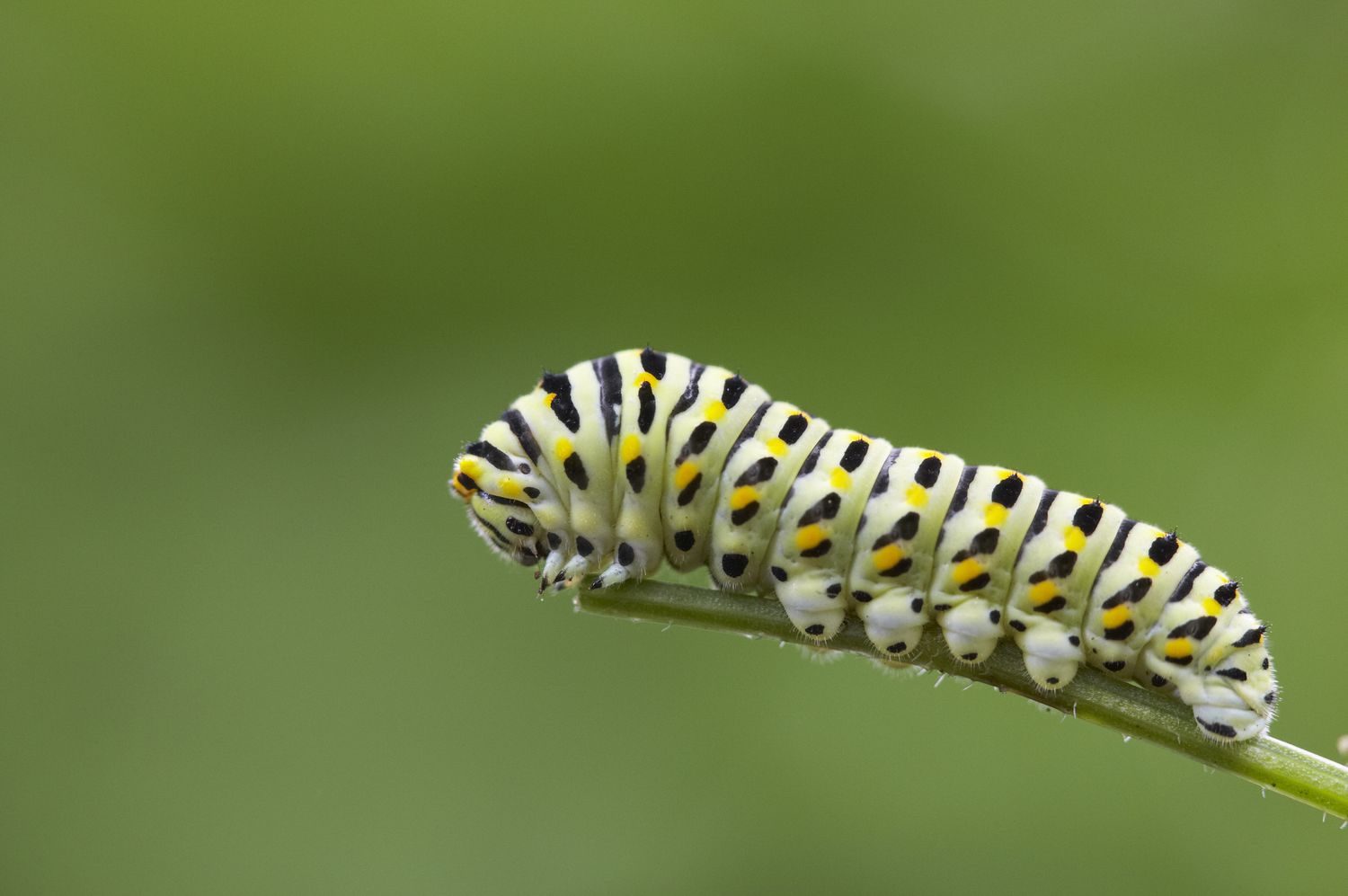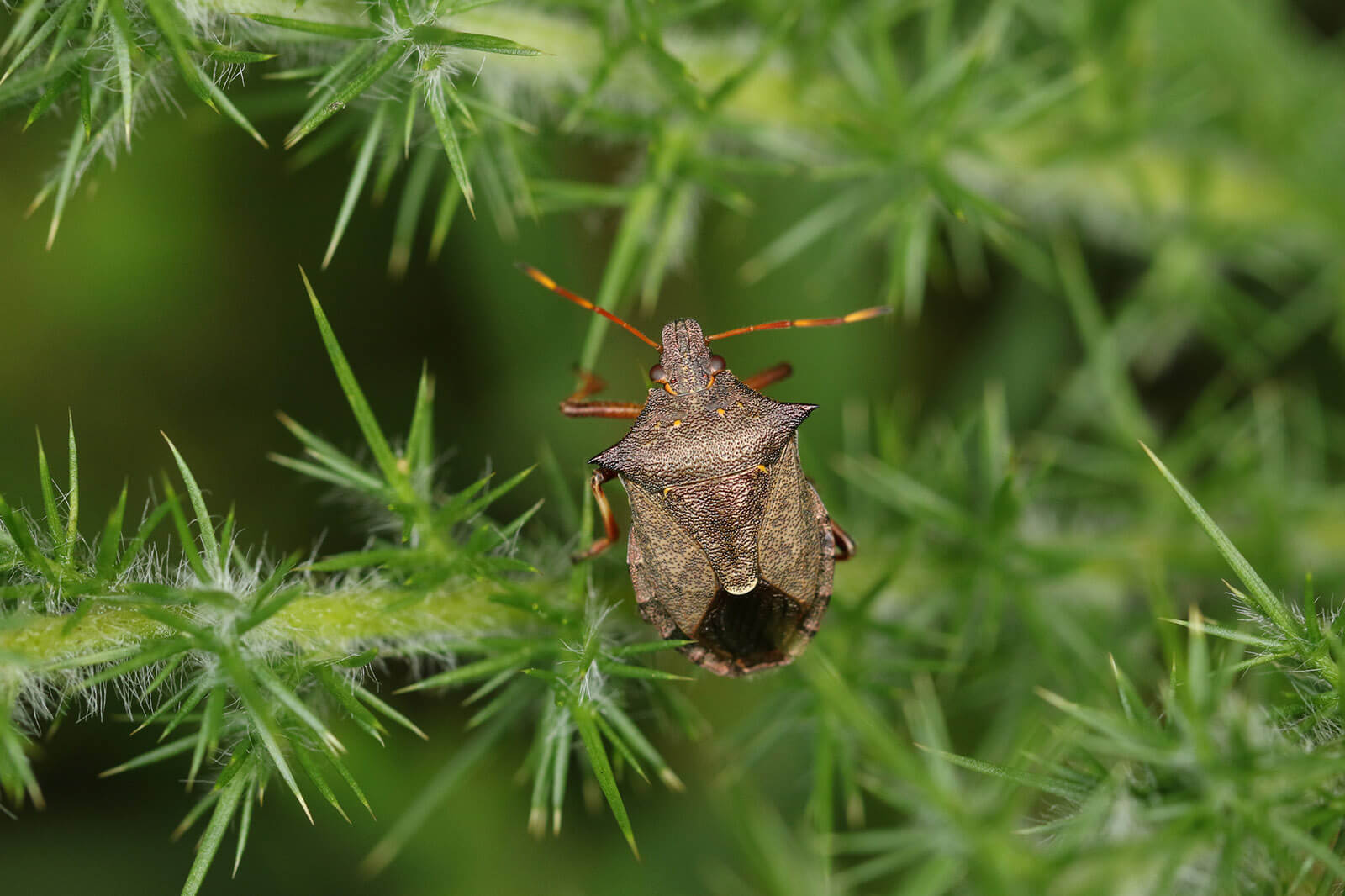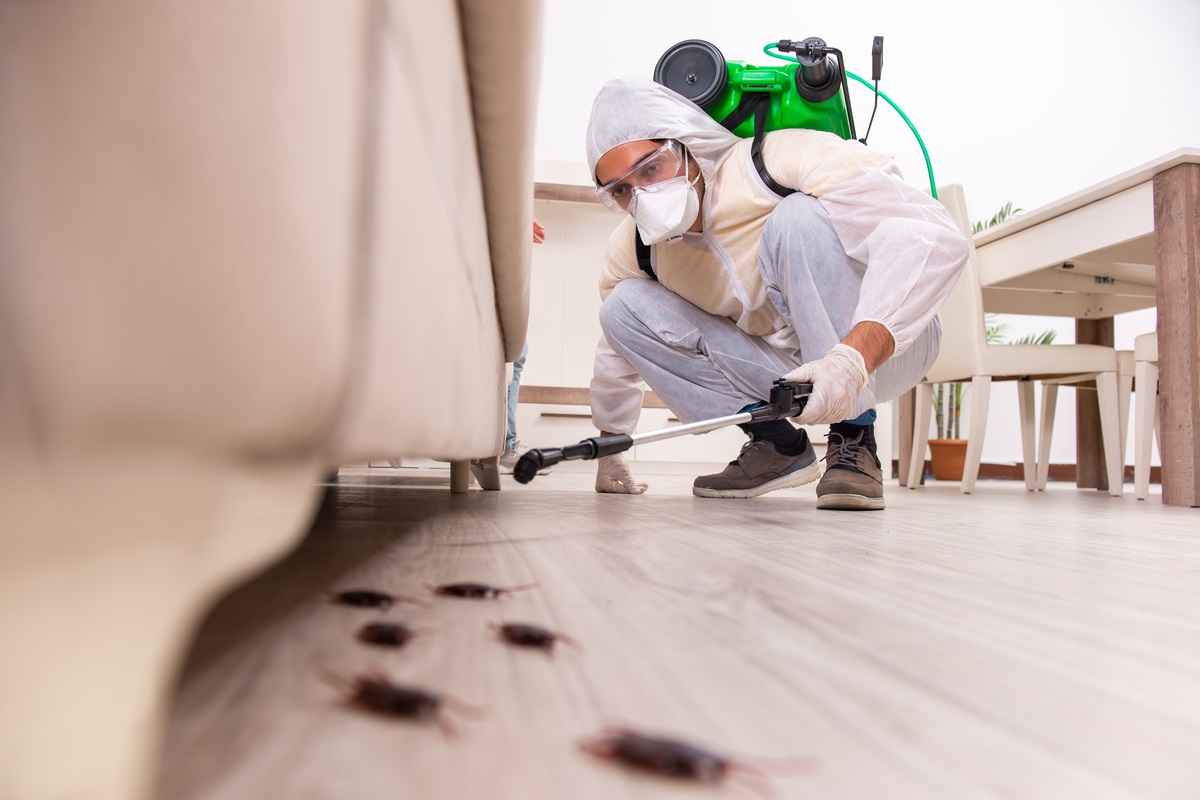

Articles
How To Get Rid Of Earwigs In Garden
Modified: January 6, 2024
Learn effective gardening techniques to eliminate earwigs in your garden. Get expert advice and tips on how to get rid of earwigs and protect your plants.
(Many of the links in this article redirect to a specific reviewed product. Your purchase of these products through affiliate links helps to generate commission for Storables.com, at no extra cost. Learn more)
Introduction
Welcome to the world of gardening! Whether you have just started cultivating your green space or have been a gardening enthusiast for years, one challenge you may encounter is dealing with pests. One such pest that can wreak havoc on your garden is the earwig.
Earwigs are small, reddish-brown insects with pincers-like appendages at the end of their abdomen. While they may look intimidating, they are relatively harmless to humans. However, they can be a nuisance in the garden as they feed on plants and can cause damage to your beloved flowers, vegetables, and other garden plants.
In this article, we will explore effective methods to get rid of earwigs in your garden. We will discuss natural and organic pest control options, as well as chemical control for severe infestations. Additionally, we will provide tips on identifying earwig infestations and preventing future outbreaks.
Understanding the behavior and habits of earwigs will help you better tackle the problem. Earwigs are primarily active at night and are attracted to damp, dark areas. They seek shelter under mulch, rocks, fallen leaves, and even cracks in the soil. During the day, they hide in crevices and come out at night to feed on plant material.
Identifying an earwig infestation is crucial to determine the best course of action. Look for tell-tale signs such as chewed leaves, irregular holes or notches in foliage, and shiny, slimy trails left behind. Be careful not to confuse earwigs with other common pests like slugs or aphids, as they require different control methods.
Now that you have a basic understanding of earwigs and their habits, let’s dive into the various methods you can employ to get rid of these pesky insects in your garden. We will start with natural methods that are eco-friendly and safe for your plants, and then explore organic and chemical control options for more severe infestations.
Key Takeaways:
- Embrace eco-friendly methods like removing hiding spots and using natural repellents to combat earwig infestations in your garden while preserving a healthy environment.
- Prioritize prevention through regular maintenance, removing attractants, and implementing physical barriers to keep earwigs at bay and maintain a thriving garden ecosystem.
Read more: How To Get Rid Of Garden Grubs
Understanding Earwigs
Before we delve into eradicating earwigs from your garden, it’s important to familiarize yourself with these insects. Understanding their anatomy, life cycle, and behavior will help you devise effective pest control strategies.
Anatomy of Earwigs
Earwigs belong to the order Dermaptera and are named for the myth that they crawl into human ears. However, this is purely a myth and earwigs pose no threat to humans.
Earwigs have elongated bodies, ranging from 6 to 25 millimeters in length. They have two pairs of wings, but only a few species can fly. The most distinct physical feature of earwigs is the pincers-like appendages, known as cerci, located at the end of their abdomens.
These cerci are used for defense, courtship, and capturing prey. Female earwigs have straight cerci, while males have curved ones. The pincers are not venomous and cannot cause any harm to humans.
Life Cycle of Earwigs
Earwigs undergo incomplete metamorphosis, meaning they go through three stages: egg, nymph, and adult. The life cycle of earwigs can span from a few months to a year, depending on the species and environmental conditions.
Female earwigs lay their eggs in the soil or other protected areas. They guard the eggs until they hatch, which takes around 1 to 2 weeks. Once the eggs hatch, tiny nymphs emerge, resembling mini versions of adult earwigs. Nymphs molt several times, gradually developing into adults.
Earwigs have the ability to regenerate their lost body parts, including their pincers, during the molting process. This remarkable regenerative ability contributes to their survival and defense mechanism.
Behavior and Habits of Earwigs
Earwigs are nocturnal creatures, meaning they are most active during the night. They hide in dark, moist areas during the day and come out to forage at night. They are attracted to decaying organic matter and are often found under mulch, fallen leaves, rocks, or logs.
As omnivorous insects, earwigs feed on a wide range of materials. They are opportunistic feeders, consuming plant matter such as leaves, flowers, and fruits, as well as small insects and decaying organic matter. However, they prefer soft and decaying plant material over healthy plants.
While earwigs can be considered nuisance pests in the garden, they can have a positive impact on the ecosystem. They play a role in decomposing organic matter and can act as scavengers by cleaning up garden debris.
Now that we have a better understanding of the anatomy, life cycle, and behavior of earwigs, we can proceed to identify signs of an earwig infestation in your garden.
Read more: How To Get Rid Of Mushrooms In The Garden
Identifying Earwig Infestation
Now that we have learned more about the anatomy and behavior of earwigs, let’s discuss how to identify if your garden is infested with these pesky insects. By recognizing the signs of earwig presence, you can take appropriate measures to control their population and minimize damage to your plants.
Signs of Earwig Presence in the Garden
There are several indicators that can help you identify if earwigs are present in your garden:
– Sighting the insects: Spotting live earwigs crawling on plants, mulch, or other garden structures.
– Shiny trails: Earwigs leave a slimy trail behind them as they move, which can be visible on leaves, soil, or other surfaces.
– Damage to plant material: Look for leaves with irregular holes, notches, or ragged edges caused by earwigs feeding on them.
– Presence of eggs: Earwigs lay their eggs in the soil or within cracks in garden structures. Look for small, white, oval-shaped eggs in these areas.
Damage Caused by Earwigs
Earwigs can cause significant damage to plants in your garden. While they are generally more attracted to decaying organic matter, they may also feed on leaves, flowers, fruits, and seedlings. Some common signs of earwig damage include:
– Chewed leaves: Earwigs often chew irregular holes or notches in foliage, giving them a tattered appearance.
– Feeding on flowers and fruits: Earwigs may consume petals, flower buds, or ripening fruits, resulting in distorted or damaged flowers and reduced fruit yield.
– Nibbling on seedlings: Young seedlings are particularly susceptible to earwig feeding, which can stunt their growth or even kill them.
Differentiating Earwigs from Other Garden Pests
It is essential to correctly identify earwigs to implement appropriate pest control methods. Here are a few distinguishing characteristics to differentiate earwigs from other common garden pests:
– Slugs and snails: While both slugs and earwigs can leave slime trails, slugs are soft-bodied, have no pincers, and leave smooth-edged holes on leaves.
– Caterpillars: Caterpillars have distinct body segments and soft bodies, whereas earwigs have an elongated, hard exoskeleton and pincers at their rear end.
– Aphids: Aphids are small, soft-bodied insects that cluster on plant stems and leaves. Unlike earwigs, they do not have pincers and suck plant juices rather than chewing foliage.
Being able to recognize the signs of an earwig infestation and distinguishing them from other pests will enable you to take targeted measures to control their population and protect your garden plants. In the next section, we will explore natural methods to control earwigs in your garden.
Read more: How To Get Rid Of Slugs In The Garden
Natural Methods to Control Earwigs
If you prefer to take a more eco-friendly and chemical-free approach to eliminate earwigs from your garden, there are several natural methods you can employ. These methods not only help reduce earwig populations but also minimize their damage to your plants.
Removing Earwig Hiding Spots
Earwigs seek shelter in dark, damp areas during the day. By removing their hiding spots, you can make your garden less attractive to these pests. Here are some steps you can take:
– Clear garden debris: Remove fallen leaves, mulch, and decaying plant matter where earwigs tend to hide.
– Eliminate excess moisture: Fix any leaks or drainage issues in your garden to reduce dampness, as earwigs are attracted to moist environments.
– Keep garden beds tidy: Regularly weed and clean your garden beds to eliminate potential hiding spots for earwigs.
Trapping Earwigs Using Rolled-up Newspapers or Cardboard Traps
Creating simple traps using rolled-up newspapers or cardboard can be an effective way to capture and reduce the number of earwigs in your garden. Here’s how to do it:
– Roll up newspaper or cardboard: Roll up newspapers or cardboard into tight cylinders and secure them with rubber bands or twine.
– Place traps in the garden: Position the traps in areas where earwigs are likely to hide, such as alongside garden beds or beneath vegetation.
– Check and dispose of the traps: Every morning, collect the traps and shake them over a bucket of soapy water to drown the trapped earwigs. Dispose of the drowned insects appropriately.
Creating a Barrier with Diatomaceous Earth
Diatomaceous earth is a natural substance made from the fossilized remains of diatoms. It acts as a physical barrier to deter and kill insects, including earwigs. Here’s how to utilize it:
– Sprinkle diatomaceous earth: Apply a thin layer of food-grade diatomaceous earth around the perimeter of your garden beds or around individual plants that are being targeted.
– Reapply after rainfall or watering: Diatomaceous earth loses its effectiveness when wet, so it may need to be reapplied after rain or watering.
Read more: How To Get Rid Of Garden Weeds
Using Homemade Earwig Repellents
You can make your own natural earwig repellents using ingredients commonly found in your kitchen. Here’s a simple recipe:
– Garlic and oil spray: Crush several cloves of garlic and mix them with vegetable oil. Let the mixture sit for 24 hours, strain, and dilute with water. Spray this solution on plant leaves and around the garden to repel earwigs.
These natural methods can be effective in reducing earwig populations and protecting your garden from their damage. However, if your garden is experiencing a severe infestation, you may need to consider more potent organic pest control options, which we will explore in the next section.
Organic Pest Control Options
If natural methods are not sufficient in controlling the earwig population in your garden, organic pest control options can provide an effective solution. Organic methods utilize beneficial insects, biological control agents, and organic insecticides to target and eliminate earwigs without harming the environment or beneficial organisms. Let’s explore these options:
Beneficial Insects that Prey on Earwigs
Introducing natural predators and beneficial insects into your garden can help control the earwig population. These predators feed on earwigs and help keep their numbers in check. Some beneficial insects known to prey on earwigs include:
– Ground beetles: These insects are voracious predators and will feed on various pests, including earwigs.
– Lacewings: Lacewing larvae are effective predators and feed on earwigs, aphids, and other small insects.
– Birds: Birds, such as robins and blackbirds, are known to hunt and eat earwigs.
Nematodes as a Biological Control Method
Nematodes, specifically Steinernema and Heterorhabditis species, are microscopic roundworms that can be used as an organic control method for earwigs. These nematodes infect and kill earwig larvae and adults. Here’s how to use them:
– Purchase nematodes: Look for nematodes labeled specifically for earwig control.
– Prepare a nematode solution: Follow the instructions on the package to mix the nematodes with water and create a solution.
– Apply to the soil: Use a watering can or sprayer to apply the nematode solution to areas where earwigs are prevalent.
Read more: How To Get Rid Of Voles In Garden
Applying Organic Insecticides for Earwig Elimination
If natural predators and nematodes are insufficient in controlling the earwig population, organic insecticides can be used as a last resort. These insecticides are derived from natural substances and are designed to be less harmful to the environment and beneficial insects. Some organic insecticides effective against earwigs include:
– Pyrethrin: Derived from chrysanthemum flowers, pyrethrin-based insecticides are contact insecticides that can be sprayed on plants to kill earwigs on contact.
– Spinosad: This natural compound is derived from soil bacteria and is effective against a wide range of pests, including earwigs. It can be applied as a spray or dust directly on plants.
When using organic insecticides, always follow the instructions on the label carefully to ensure safe and effective application. Remember to minimize the application of any pesticides to protect beneficial insects and pollinators.
By utilizing beneficial insects, nematodes, and organic insecticides, you can effectively manage and control the earwig population in your garden while maintaining a healthy and eco-friendly environment. However, in cases of severe infestations or if organic methods prove ineffective, you may need to consider chemical control measures, which we will discuss in the next section.
Chemical Control for Severe Infestations
In severe cases where natural and organic pest control methods have failed to effectively manage an earwig infestation, chemical control measures can be considered. It is important to note that chemical pesticides should only be used as a last resort and with caution, as they may have environmental implications and can harm beneficial insects. Here’s what you need to know about using chemical pesticides for earwig control:
When and How to Use Chemical Pesticides
Chemical pesticides should only be used when other methods have proven ineffective or when the infestation is severe and causing significant damage to your garden. Here are some key considerations for using chemical control:
– Choose the right product: Select a pesticide specifically designed for earwigs. Read the product label thoroughly to understand its application instructions, rates, and precautions.
– Follow application instructions: Wear protective clothing, including gloves and goggles, as directed on the product label. Apply the pesticide according to the recommended rates and timing for maximum effectiveness.
– Target areas of activity: Apply the pesticide to areas where earwigs are active, such as around the perimeter of garden beds, along plant bases, and beneath vegetation.
– Avoid using near water sources: Take care not to apply pesticides near water bodies, as they may harm aquatic organisms.
– Monitor and reapply if necessary: Observe the effectiveness of the pesticide treatment. If earwigs persist, consider reapplying following the recommended intervals specified on the product label.
Safety Precautions and Considerations
Before using chemical pesticides, it is crucial to consider safety precautions to protect yourself, others, and the environment. Keep in mind these important guidelines:
– Read and follow the instructions: Familiarize yourself with the product’s safety guidelines, including handling, storage, and disposal. Follow them meticulously to prevent accidents and reduce environmental impact.
– Keep children and pets away: Ensure children and pets stay clear of treated areas until the pesticide has dried or as specified on the product label.
– Minimize pesticide use: Apply pesticides only to affected areas to reduce their impact on beneficial insects and the environment.
– Consider alternative control methods: If possible, explore alternative control methods before resorting to chemical pesticides. Encouraging natural predators and practicing good garden hygiene can help mitigate the need for chemical intervention.
Remember, chemical pesticides should be used as a last resort and should not be the default method of control. Always consider the potential risks and weigh the benefits against the potential harm to the environment and beneficial organisms in your garden.
Now that we have explored chemical control options, let’s move on to discussing preventive measures to avoid future earwig infestations in your garden.
Read more: How To Get Rid Of Grass In A Garden Bed
Preventing Future Earwig Infestations
Prevention is key when it comes to managing earwig infestations in your garden. By implementing regular maintenance practices and taking preventive measures, you can create an environment that is less attractive to earwigs and reduce the chances of future infestations. Here are some effective strategies:
Regular Garden Maintenance Practices
Maintaining a healthy and well-managed garden goes a long way in deterring earwigs and other pests. Here are some practices to incorporate into your garden maintenance routine:
– Weed regularly: Regularly remove weeds from your garden beds to eliminate potential hiding spots for earwigs.
– Prune excess foliage: Trim overgrown plants and remove dead or decaying plant material, as these can attract earwigs.
– Clean up garden debris: Rake up fallen leaves, old mulch, and other organic matter that can provide shelter for earwigs.
– Improve drainage: If your garden tends to be excessively damp, consider amending the soil or creating drainage channels to reduce moisture levels.
– Aerate the soil: Loosen compacted soil to improve drainage and discourage earwigs from burrowing.
Removing Attractants and Implementing Preventive Measures
Eliminating attractants and implementing preventive measures can help create an environment that is less appealing to earwigs. Here are some steps to consider:
– Remove hiding spots: Get rid of any unnecessary garden clutter, such as rocks, logs, or boards, which can provide hiding places for earwigs.
– Maintain a clean garden boundary: Trim back vegetation and maintain a clear boundary between your garden and surrounding areas to deter earwigs from crawling in.
– Use mulch strategically: Limit the use of mulch, especially in areas prone to earwig activity. If you do use mulch, choose materials like gravel, crushed stone, or diatomaceous earth, which are less attractive to earwigs.
– Apply physical barriers: Use copper tape or diatomaceous earth barriers around vulnerable plants or garden beds to deter earwigs from accessing them.
– Monitor and take prompt action: Regularly inspect your plants for any signs of earwig activity. If you notice an infestation, take immediate measures to prevent it from spreading.
By consistently implementing these preventive measures and maintaining good garden hygiene, you can greatly reduce the likelihood of future earwig infestations and keep your garden thriving without the nuisance of these pests.
Now that you have learned preventive strategies, let’s conclude our comprehensive guide on how to get rid of earwigs in your garden. By understanding their behavior, identifying infestations, utilizing natural and organic control methods, considering chemical control as a last resort, and implementing preventive measures, you can effectively manage and prevent earwig infestations while maintaining an eco-friendly garden environment.
Conclusion
Dealing with earwig infestations in your garden can be a frustrating experience, but with the right knowledge and strategies, you can effectively manage and prevent these pests from wreaking havoc on your plants. By understanding the anatomy, life cycle, and behavior of earwigs, you gain valuable insights into their habits and vulnerabilities. This knowledge serves as a foundation for implementing targeted pest control methods.
Identifying signs of earwig presence in the garden, such as chewed leaves, shiny trails, and the presence of eggs, allows you to take early action. Natural methods, such as removing earwig hiding spots and trapping them using rolled-up newspapers or cardboard traps, offer eco-friendly solutions to control their populations. Creating a barrier with diatomaceous earth and utilizing homemade earwig repellents further enhance your ability to protect your plants.
If natural methods prove insufficient, organic pest control options come into play. Beneficial insects that prey on earwigs, such as ground beetles, lacewings, and birds, can be introduced to provide natural control. Nematodes, microscopic roundworms, serve as biological control agents, infecting and killing earwigs. Organic insecticides can be used as a last resort for severe infestations, but it’s important to follow instructions and minimize their use to avoid harm to the environment and beneficial organisms.
When all else fails, and you are faced with a severe earwig infestation, chemical control measures can be considered. However, it is crucial to exercise caution, follow safety precautions, and use them sparingly as a last resort to minimize their impact on the environment.
Prevention is the key to long-term earwig management. Regular garden maintenance practices, such as weeding, pruning, and cleaning up garden debris, help make your garden less hospitable to earwigs. Removing attractants, implementing physical barriers, and practicing good garden hygiene further deter them from infesting your plants.
By incorporating these strategies and techniques into your gardening routine, you can effectively control and prevent future earwig infestations in your garden. Remember, a healthy and vibrant garden is not only a source of beauty and enjoyment but also a haven for beneficial insects and a balanced ecosystem.
Thank you for joining us on this comprehensive journey of understanding and combating earwig infestations. Happy gardening!
Frequently Asked Questions about How To Get Rid Of Earwigs In Garden
Was this page helpful?
At Storables.com, we guarantee accurate and reliable information. Our content, validated by Expert Board Contributors, is crafted following stringent Editorial Policies. We're committed to providing you with well-researched, expert-backed insights for all your informational needs.











0 thoughts on “How To Get Rid Of Earwigs In Garden”